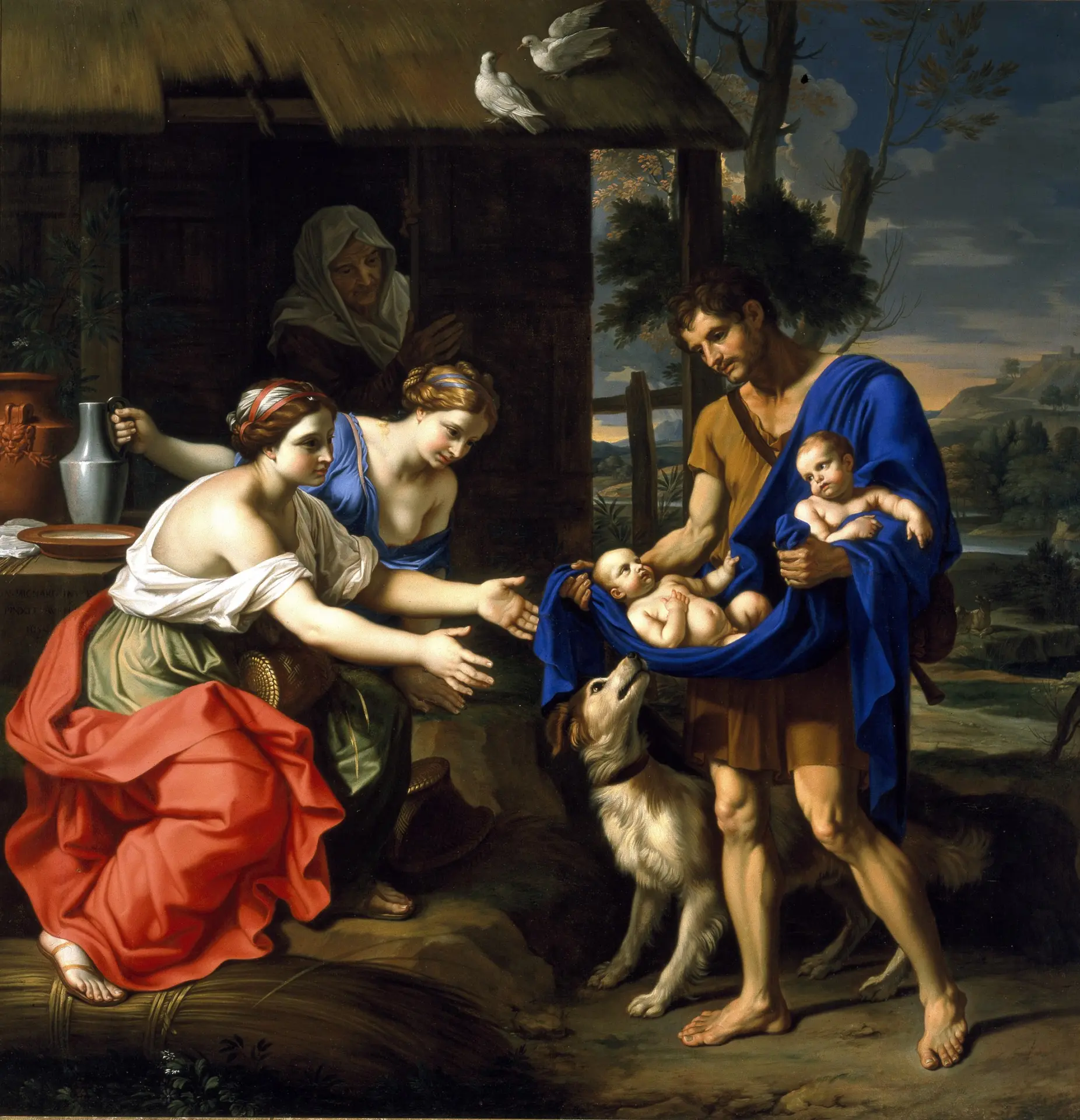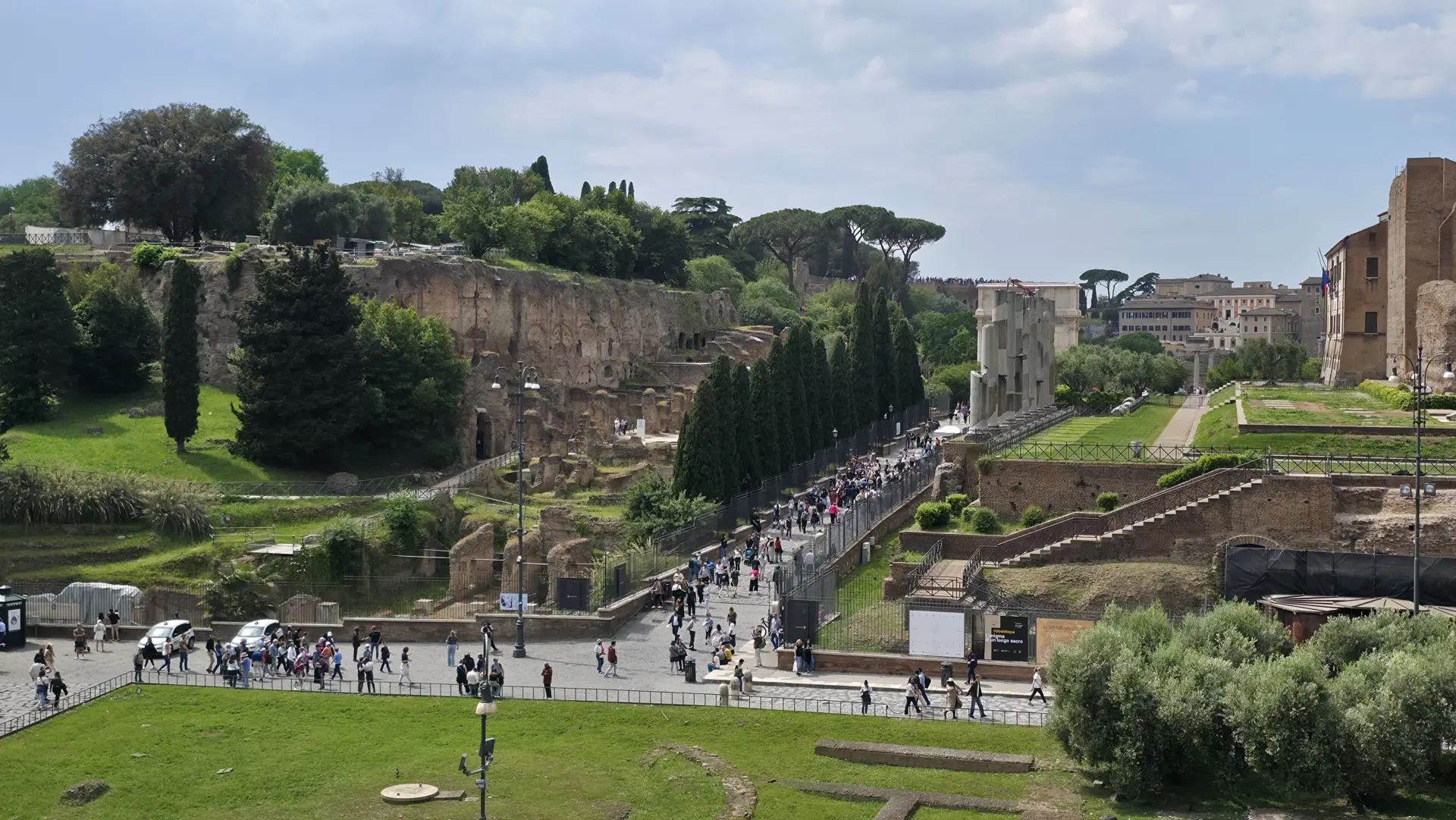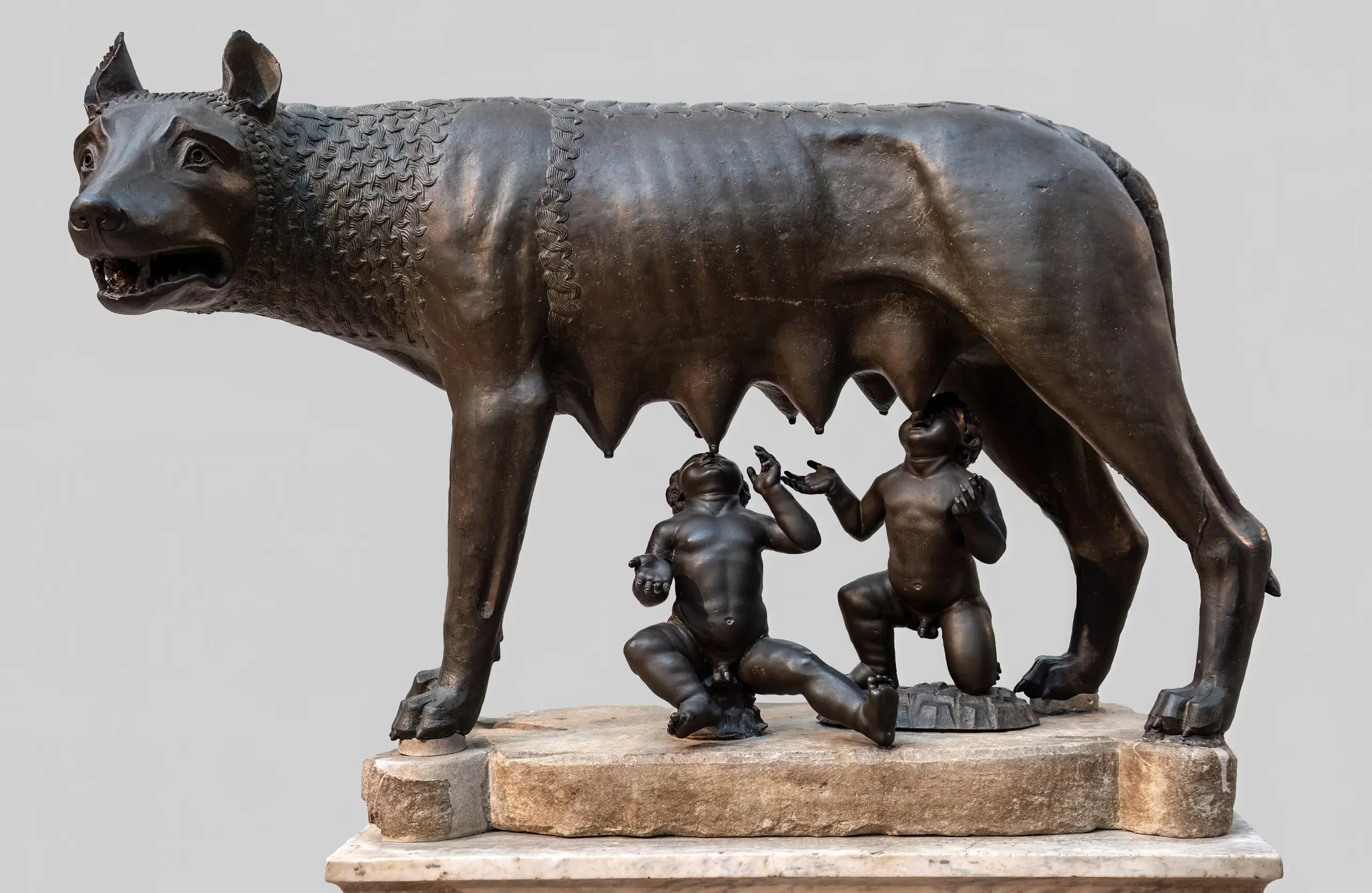Hello my dear readers 💫 Before we explore the grandeur of the Roman Forum and the epicenter of Roman political life, it only feels right to begin where Rome itself was born: with a tale of rivalry, destiny, and one very iconic she-wolf. Because to understand the foundations of Rome, you have to start with the myth. And oh, what a myth it is!
🏛️ The Story of Romulus and Remus
According to ancient Roman legend, Romulus and Remus were twin brothers born to Rhea Silvia, a Vestal Virgin, and the god Mars (yes, the god of war). Their birth posed a threat to the king of Alba Longa, who ordered the infants drowned in the Tiber River. But fate had other plans…
The twins were miraculously saved and nursed by a she-wolf in a cave known as the Lupercal, located on the slopes of the Palatine Hill. A woodpecker, sacred to Mars, also brought them food. Later, a shepherd named Faustulus and his wife raised the boys. As they grew older, the twins discovered their true heritage. They decided to found a new city where they had been saved. But here’s where myth meets drama: Romulus and Remus disagreed on which hill the city should rise. Remus preferred the Aventine; Romulus, the Palatine.

The disagreement ended in tragedy. Romulus killed Remus (according to most versions) and went on to found the city of Rome on April 21, 753 BCE, giving it his name. He became the city’s first king and, eventually, a god (Quirinus) in Roman mythology.
🐺 The Symbolism of the She-Wolf
The Capitoline Wolf is one of Rome’s most enduring images, the bronze sculpture of a fierce mother wolf suckling the twins has become a symbol of the city’s resilience and mythical strength. Whether it’s historical or not (some believe the sculpture’s twins were added during the Renaissance), the emotion it stirs is timeless. You can still see the statue today at the Capitoline Museums, not far from where the events of this legend are said to have taken place.
📍 Myth Meets Place
What I love most about this legend is how Rome weaves myth into geography. When you explore the Roman Forum or gaze out from the Palatine Hill, you’re not just seeing scenic ruins, you’re stepping into the stage of an ancient story. The Lupercal cave, the founding of Alba Longa, and the rise of Romulus aren’t distant tales locked in books; they’re etched into the city’s very foundations. Every stone, arch, and pathway whispers of gods, twins, and kings. And truly, Rome does legend like nowhere else, blending myth and history so seamlessly that walking through its streets feels like leafing through a living epic.

Final Thoughts
The story of Romulus and Remus may be fantastical, but like many origin myths, it reveals how people make sense of power, identity, and legacy. Rome wasn’t just built, it was born from a tale of survival, sacrifice, and fate. Whether you believe the story or not, it’s impossible to stand in the Forum or atop Palatine Hill and not feel the pulse of something ancient.
It’s the kind of legend that lingers in the air as you wander, a reminder that in Rome, the line between myth and memory is beautifully, irresistibly blurred.
xoxo,
Bubbly 🐺

